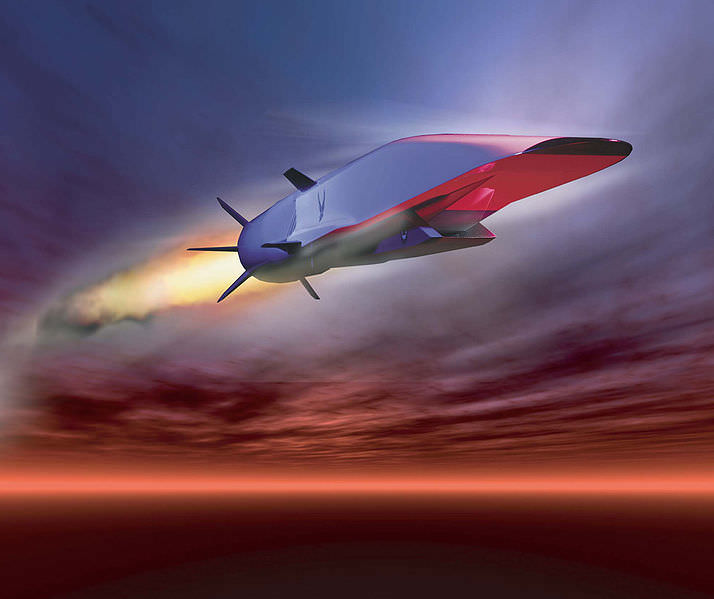[/caption]
A highly anticipated test flight of the X-51A Waverider scramjet ended abruptly after the experimental aircraft suffered a control failure and broke apart during an attempt to fly at six times the speed of sound. The test flight took place off the coast of California and the X-51A was dropped from a B-52 bomber, but an US Air Force spokesman said that a faulty control fin prevented it from starting its unique "airbreathing" scramjet engine.
The X-51 Waverider program is a cooperative effort of the Air Force, DARPA, NASA, Boeing and Pratt & Whitney Rocketdyne. The Air Force is hoping this type of technology would be successful enough to eventually be used for more efficient transport of payloads into orbit and the Pentagon has touted its ability to deliver strikes around the globe within minutes.
The craft was carried to about 15,240 meters (50,000 ft.) by a B-52 from Edwards Air Force Base in California, and was dropped over the Pacific Ocean. Designers were hoping the Waverider would reach Mach 6 or more.
The scramjet (short for "supersonic combustion ramjet") is an air-breathing engine, where intake air blows through its combustion chamber at supersonic speeds. The engine has no moving parts, and the oxygen needed by the engine to combust is taken from the atmosphere passing through the vehicle, instead of from a tank onboard, making the craft smaller, lighter and faster. Some designers have predicted it could reach speeds of anywhere from Mach 12 to Mach 24. Mach 24 is more than 29,000 km/hour (18,000 miles per hour.) This could cut an 18-hour trip to Tokyo from New York City to less than 2 hours.
But the concept has had limited success.
In May 2010, the first test of the vehicle had sort of a "successful" flight of 200 seconds of autonomous flight, which set a duration record for an aircraft powered by a scramjet engine. However, another test in 2011 failed, which was attributed to another design flaw.
A statement put out by the Air force said officials will conduct a rigorous evaluation of the test to assess all the factors behind the failure.
 Universe Today
Universe Today
